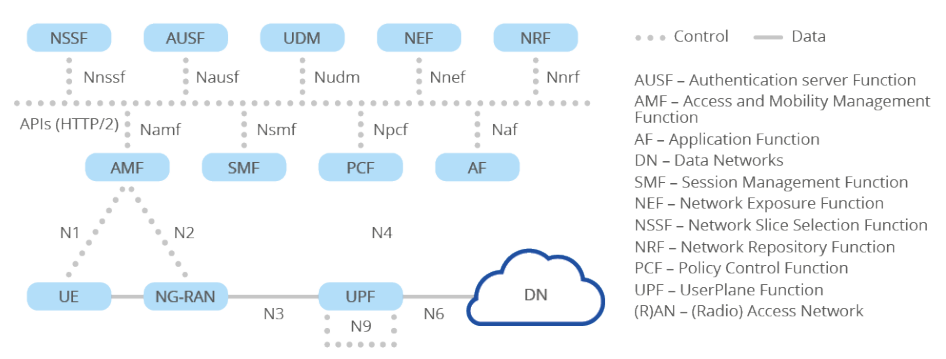Compared to previous generations the 3GPP 5G system architecture is Service-Based Architecture (SBA). That means wherever suitable the architectural elements are defined as network functions that offer their services via interfaces of a common framework to any network functions that are permitted to make use of these provided services. The SBA specifies flat peer-to-peer relationships between Network Functions (NFs) via the HTTP/2-based Service Based Interface (SBI).

Network Repository Functions (NRF) allow every network function to discover the services offered by other network functions.
This architectural model, which further adopts principles like modularity, reusability, and self-containment of network functions, is chosen to enable deployments to take advantage of the latest virtualization and software technologies.
Instead of specifying network entities, a more modular design is achieved by specifying a set of NFs which allows stronger decoupling between logical and physical architecture, facilitating the virtualization of the different NFs running on generic computer hardware. Furthermore, NFs can be physically implemented in different ways (e.g. all of them in a single physical node, distributed across multiple nodes, or running on a cloud platform).
With the split of the control plane and user plane, NFs responsible for the control plane are different from those responsible for the user plane allowing independent scalability and evolution (e.g. allocating more capacity to the control plane without affecting the user plane). Moreover, it allows flexible deployments, e.g. centralized location for the control plane or a distributed (remote) location for the user plane.
